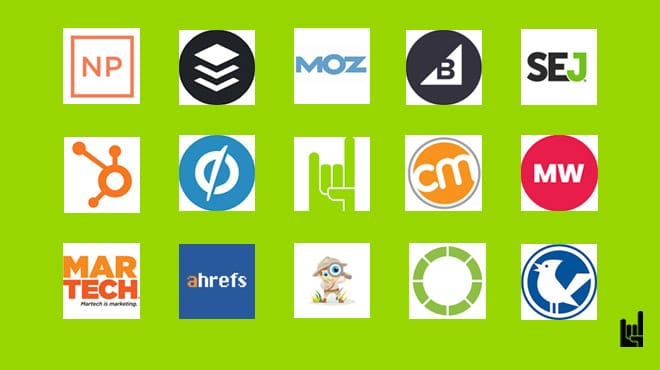Introduction
Cultivating an AI-first mindset is essential for organizations aiming to fully leverage the transformative power of AI digital innovation. This approach transcends simple technical proficiency and embodies an organization-wide evolution involving restructured processes, strategic realignment, and cultural transformation characterized by forward-thinking, adaptability, and a commitment to continuous innovation.
Disclaimer
Building an AI-first mindset is not the same as developing any other skillset within your organization.
The key differences lie in the transformative journey it demands.
First, the organization itself must evolve alongside this development, adapting its structures, processes, and strategies to align with new technological possibilities.
Second, it requires a cultural shift—an embrace of AI innovation, adaptability, and a forward-thinking attitude that permeates every level of the organization. This cultural transformation is what ultimately enables the seamless integration of AI and empowers teams to harness its full potential.

Challenges in Traditional Skill Development
The notion of employees relying on a fixed skill set throughout their careers is obsolete. Similarly, periodic upskilling initiatives are insufficient in an era defined by rapid technological advancement. Modern organizations must foster a culture of continuous learning and design adaptive training programs accessible to all employees, regardless of their function. What’s more, employee satisfaction survey questions can help you gain insights into their resonance with the workforce and pinpoint areas for improvement.
Practices for a Successful AI Training Program
- Establish comprehensive, organization-wide goals for AI training.
- Design learning experiences that cater to all functional roles.
- Emphasize scalable, virtual training delivery.
- Utilize motivational incentives such as campaigns, awards, and recognition.
- Ensure that managers are informed and supportive of training initiatives.
- Facilitate hands-on learning opportunities through digitally integrated projects.
Key Elements of Building an AI-First Culture
To establish an AI-first culture, organizations should:
- Implement certification programs aimed at upskilling for digital transformation.
- Encourage a continuous learning environment.
- A mechanism for Sharing playlists of tailored lessons with colleagues and not only

Mindset: Perceive, Feel, and Act
This means that a mindset encompasses how an individual perceives the world, the emotions they attach to those perceptions, and the actions they take based on them.
A positive and adaptive mindset drives constructive behavior, while a fixed or negative mindset can limit growth and innovation.
AI-First Mindset: Turning digital skills into opportunities
To develop an AI-first mindset, it’s essential to understand that it doesn’t solely revolve around the adoption of specific AI technologies. Instead, it starts with cultivating a digital mindset—an adaptive, forward-thinking approach that harnesses digital skills and converts them into opportunities.
Our Role as Educators
We need to play an essential role in facilitating a cultural shift (towards AI) rather than solely imparting technical knowledge (AI tools and skills). They are instrumental in sharing expertise and inspiring teams to embrace forward-thinking mindsets, thus shaping the organization’s future.
Hiring enough digital talent to meet demand is nearly impossible.
Recruitment must be supplemented with an expansive effort to upskill existing talent.
How to focus in non-features
Effective AI educators (that need to teach about AI-first mindset), prioritize in the following elements to deepen engagement:
Focus on Inputs and Outputs: Educators should guide teams to understand the broader implications of how AI systems process inputs to generate outputs. This holistic perspective equips teams to refine processes and strategies beyond superficial feature use.
Prompt Engineering for Strategic Thinking: Rather than simply teaching pre-defined prompts, educators should cultivate skills in designing prompts that allow AI to assist in building and refining them. This meta-level engagement with prompt crafting fosters innovative approaches to problem-solving.
Application Across Niches: Providing varied examples from multiple industries helps illustrate the versatility of AI. For instance, AI marketing agencies are leveraging AI to optimize ad targeting by analyzing consumer behavior; in healthcare, it can assist in predictive analytics for patient care; in education, it personalizes learning paths. Highlighting these diverse applications helps teams appreciate the wide-ranging impact of AI.
Emphasis on Non-Feature Utilization: Educators must underscore that true AI fluency extends beyond understanding tool features—it involves strategic thinking that maximizes AI’s potential to enhance workflows, improve decision-making, and create adaptive processes.
Following the principles outlined in the AI Bill of Rights, organizations can introduce AI in ways that foster trust, ensure compliance, and minimize risk—helping employees feel safe and supported as they adopt new technologies.
By inspiring teams to integrate these concepts, educators help shape a forward-thinking workforce capable of driving innovation and shaping the future of the organization.
Essential Characteristics for Employees
To excel in an AI-first environment, employees should exhibit:
- Ambition: A strong drive to push boundaries and achieve new heights.
- Digital Fluency: Proficiency in using digital tools for optimized workflows.
- Ownership: A proactive approach to accountability and responsibility.
- Collaboration Skills: The ability to communicate effectively and work cohesively.
- Adaptability and Resilience: The capacity to learn from setbacks and remain flexible in dynamic environments.
Overcoming Resistance to Change
Successful AI adoption hinges on addressing two pivotal factors: buy-in and confidence. The most successful implementations occur when employees not only perceive the benefits of digital change but also trust in their ability to master the required skills. Leaders can inspire this by:
- Emphasizing the strategic importance of digital initiatives.
- Implementing internal campaigns that help employees visualize their roles in a digitally transformed future.
- Reinforcing the significance of individual contributions.

Understanding Employee Mindsets in AI Adaptation
Embracing an AI-first paradigm across an organization requires more than technical training; it necessitates an in-depth understanding of the varied mindsets present within the workforce. Leaders must identify and address these perspectives to effectively guide their teams toward a cohesive cultural shift. Below, we outline the four predominant mindsets within the workforce:
The Frustrated
“My company and I would benefit if I learned digital content, but I don’t think I can do it.”
Frustrated employees recognize the importance of digital transformation and acknowledge its potential advantages for themselves and the organization. However, their lack of confidence in acquiring and applying new digital skills creates an anxiety-inducing gap that can stymie active engagement.
How to Support Them:
Organizations should introduce targeted coaching initiatives and mentorship programs designed to bolster confidence. Establishing achievable learning milestones, coupled with positive reinforcement, can transform frustration into incremental progress.
The Inspired
“I am capable of learning digital content, and I believe that doing so would be good for me and my company.”
Inspired employees represent the ideal advocates for digital transformation. With confidence in their ability to learn and a clear understanding of its value, these individuals are primed to drive technological initiatives and serve as ambassadors of change.
How to Engage Them:
Organizations should empower these employees by positioning them as mentors and project leaders. Providing advanced training and opportunities for leadership within digital transformation efforts can amplify their influence and propagate a culture of enthusiasm and growth.
The Oppressed
“I don’t think I am capable of learning digital content, and I don’t see the benefit to me or my company in learning it.”
Employees who feel oppressed face dual challenges: a lack of confidence in their learning capabilities and skepticism about the benefits of digital transformation. This mindset poses a significant obstacle if left unaddressed.
How to Motivate Them:
Leaders should focus on raising awareness and fostering belief among these employees. Strategies include storytelling that highlights relatable success cases, internal campaigns that underscore the importance of digital transformation, and direct support from managers to build trust. Incremental successes can help shift their perception and illuminate the advantages of upskilling.
The Indifferent
“I can learn digital content, but I don’t see the benefit to me or my company.”
Indifferent employees possess the confidence to learn but lack motivation due to a perceived disconnect between digital transformation and their personal or professional advancement. This detachment can lead to disengagement and lost potential.
How to Shift Their Perspective:
Leaders must illustrate how digital competencies translate to tangible personal achievements and career progression. Demonstrating how AI tools and technologies can enhance job performance and satisfaction can transform indifference into active participation.
Monitoring and Analysis
With the help of AI reporting, organizations should implement a system that measures and reports:
- Employee engagement with digital learning platforms.
- The link between continuous learning and performance outcomes.
- The impact of various learning tools on expected and unexpected metrics.
Prerequisites for an AI-First Mindset
According to insights from Marco Lansiti of Harvard Business School, essential prerequisites include:
- Global access to company data by everyone i.e. courses, analytics,
researches, reports, previous implementation examples etc - Enabled AI technology and tools. Always remember that AI is democratizing innovation
- Adapting existing processes to help teams get into tech and tools
- Reliance on cloud computing i.e. drive, Sharepoint etc
- Making sure that people have access (and time) to the technology and both skills and motivation to use it
Final Thoughts
Attempting to digitize processes without revising them leads to inefficiencies. To achieve true progress, organizations must thoughtfully redesign processes to align with the capabilities offered by AI and digital tools.
Was this article useful?

Theodore has 20 years of experience running successful and profitable software products. In his free time, he coaches and consults startups. His career includes managerial posts for companies in the UK and abroad, and he has significant skills in intrapreneurship and entrepreneurship.



